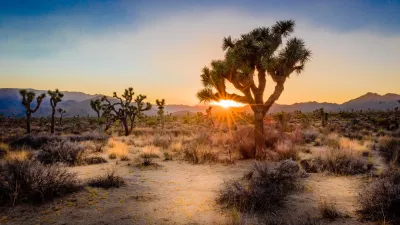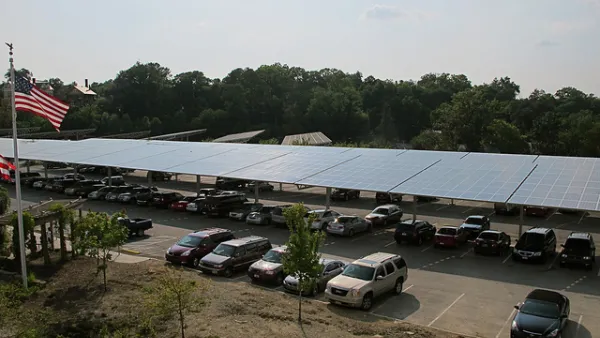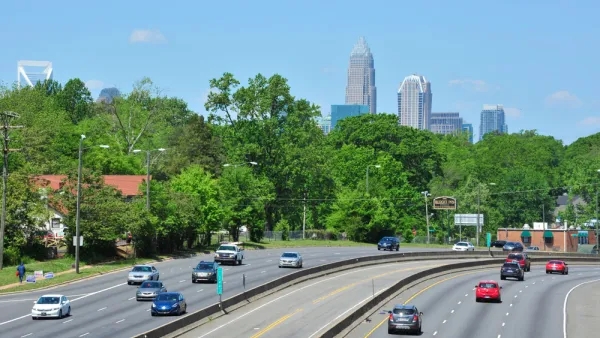The wind strewn and sunny parts of California are home to many species threatened both by climate change and renewable energy facilities like wind and solar power facilities. What is an environmentalist to do?

"Renewable energy corporations have launched an eleventh-hour campaign to derail a petition seeking endangered species protection for Joshua trees, saying it could hinder development of the solar and wind power projects California needs to wean itself off fossil fuels," reports Louis Sahagun.
The political action by renewable energy companies coalescing under the banner of the Solar Energy Industries Association comes ahead of an expected vote by the Fish and Game Commission on August 20 about whether to accept the petition filed by the Center for Biological Diversity and already approved by state biologists.
The renewable energy interests are arguing that by lowering the amount of emissions that cause climate change, renewable energy facilities will be protecting the delicate climate balance that allows Joshua Trees to flourish in California's desert regions.
Brendan Cummings, conservation director at the Center for Biological Diversity and a resident of the community of Joshua Tree, is quoted in the article recognizing the importance of renewable energy to fight climate change but also inciting that renewable energy facilities be built somewhere other than Joshua tree habitat.
"A final decision by the five-member state panel is expected next year. If the trees are listed, the law requires state wildlife managers to devise a recovery plan, which could limit development across thousands of acres of southeastern California’s sunniest real estate," according to Sahagun.
FULL STORY: Renewable energy corporations fight endangered species status for Joshua trees
National Parks Layoffs Will Cause Communities to Lose Billions
Thousands of essential park workers were laid off this week, just before the busy spring break season.

Retro-silient?: America’s First “Eco-burb,” The Woodlands Turns 50
A master-planned community north of Houston offers lessons on green infrastructure and resilient design, but falls short of its founder’s lofty affordability and walkability goals.

Delivering for America Plan Will Downgrade Mail Service in at Least 49.5 Percent of Zip Codes
Republican and Democrat lawmakers criticize the plan for its disproportionate negative impact on rural communities.

Test News Post 1
This is a summary

Test News Headline 46
Test for the image on the front page.

Balancing Bombs and Butterflies: How the National Guard Protects a Rare Species
The National Guard at Fort Indiantown Gap uses GIS technology and land management strategies to balance military training with conservation efforts, ensuring the survival of the rare eastern regal fritillary butterfly.
Urban Design for Planners 1: Software Tools
This six-course series explores essential urban design concepts using open source software and equips planners with the tools they need to participate fully in the urban design process.
Planning for Universal Design
Learn the tools for implementing Universal Design in planning regulations.
EMC Planning Group, Inc.
Planetizen
Planetizen
Mpact (formerly Rail~Volution)
Great Falls Development Authority, Inc.
HUDs Office of Policy Development and Research
NYU Wagner Graduate School of Public Service




























